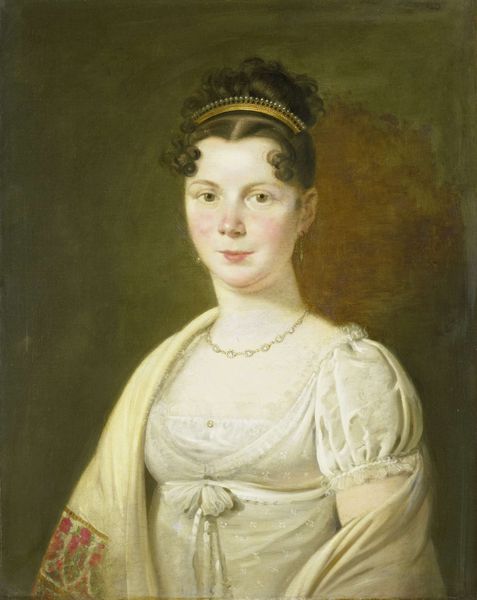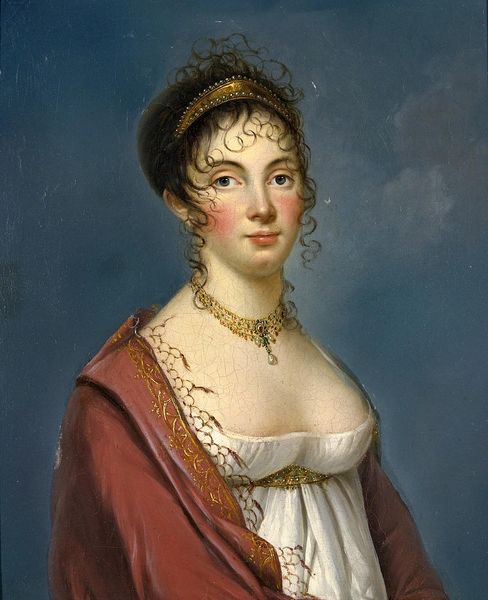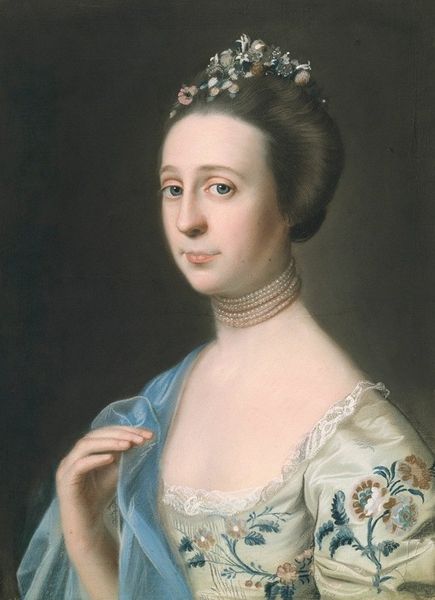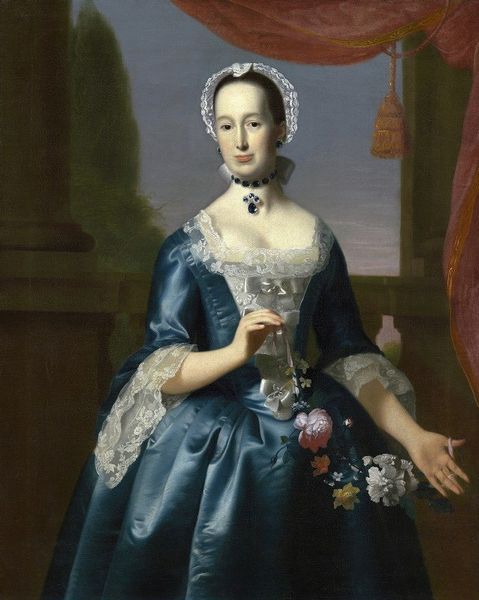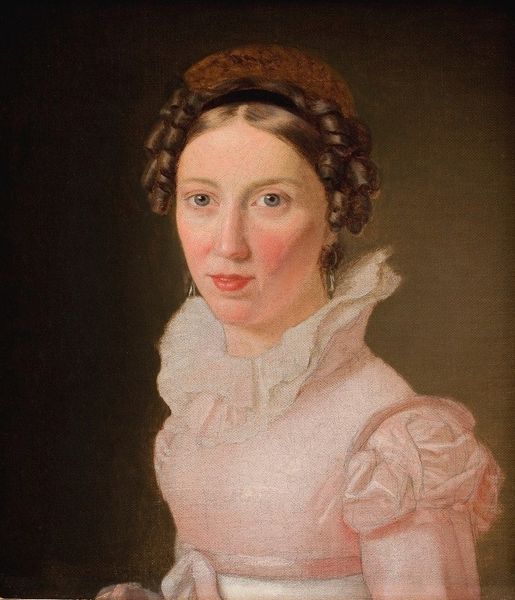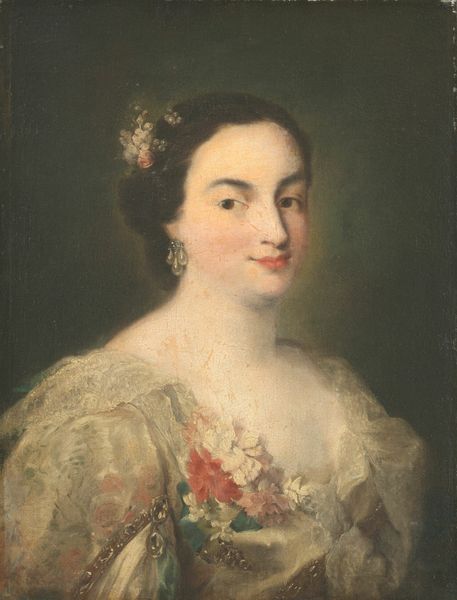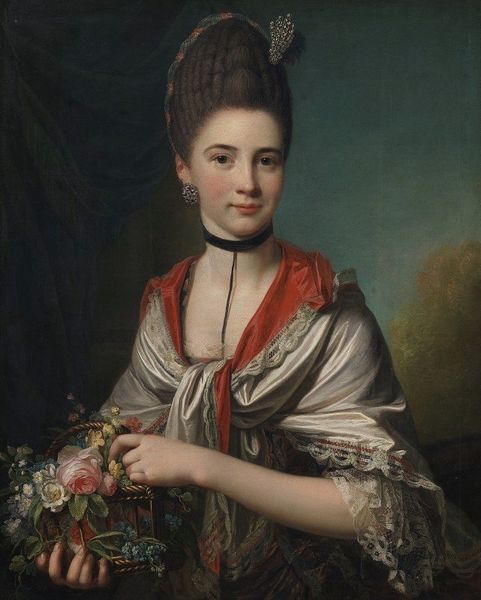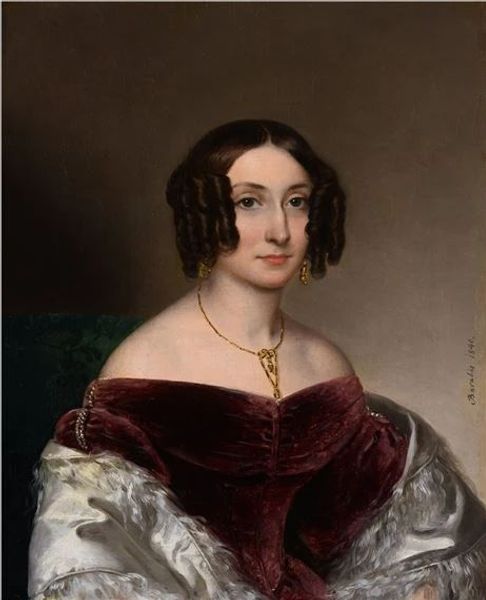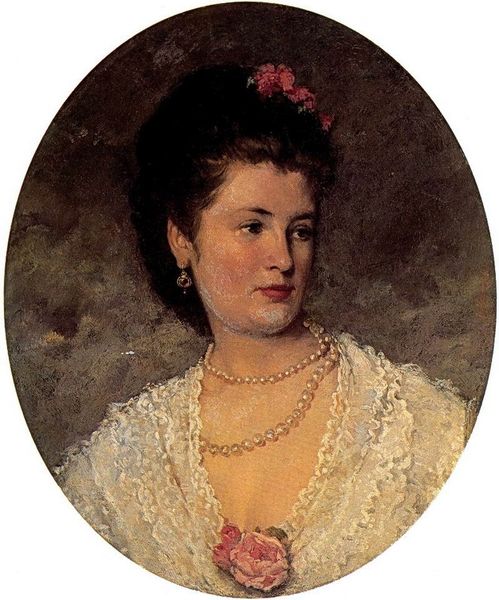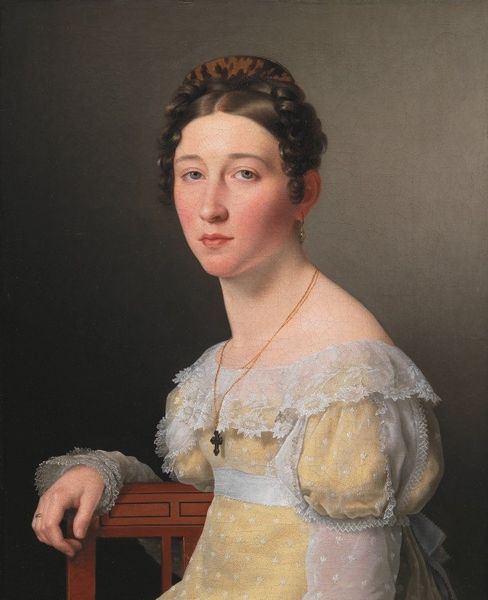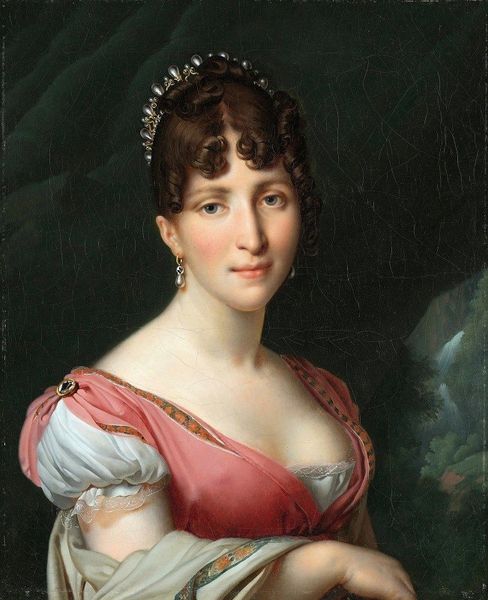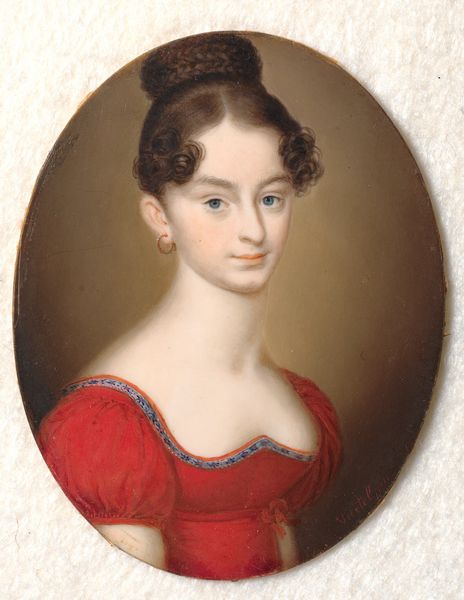
Portrait of Jacoba van Wessem, Wife of Lord Stumphius, Burgomaster of Beverwijk c. 1820 - 1830
0:00
0:00
painting, oil-paint
#
portrait
#
painting
#
oil-paint
#
romanticism
#
genre-painting
#
academic-art
Dimensions: height 63.5 cm, width 52.2 cm, thickness 3.6 cm, depth 5.8 cm
Copyright: Rijks Museum: Open Domain
Curator: This is a captivating portrait of Jacoba van Wessem, dating to around 1820-1830. The artist is Dirk van Oosterhoudt. Editor: She seems so reserved, almost melancholic. And the way her simple white dress is juxtaposed with that striking coral necklace and ornate gold pendant – it’s quite striking, isn’t it? Curator: Absolutely. The stark contrast definitely draws the eye. Van Oosterhoudt painted this during the Romantic period. As the wife of a prominent burgomaster, Jacoba van Wessem represents the emerging bourgeois class, whose aspirations and sense of self were increasingly reflected in commissioned portraits like this. Editor: I’m also intrigued by the craftsmanship. Look closely at how those tiny coral beads are rendered, each one individually caught in the light. It tells me so much about the meticulous labour that went into both its making and wearing. How would these people perceived this labor and material luxury? Curator: The application of Romantic aesthetics within academic art clearly sought to legitimize the sitters socially and perhaps offer her an enduring, elevated legacy in Beverwijk society, or, perhaps, far beyond. The stiff pose and subtle idealization adhere to certain expectations while nodding towards the new emotional sensibilities of the era. Editor: I’m curious about that gold pendant as well. It seems far too significant to merely be decorative. I wonder, what does its composition imply materially about access, craft, or display. Curator: Indeed, It possibly contained a miniature portrait or perhaps a lock of hair. Those tokens spoke volumes about relationships and status at the time. What fascinates me is how the display and patronage of such art reinforced and visually codified social hierarchies. Editor: Right. Beyond mere aesthetics, there’s a whole system of value embedded in those details and decisions – from the labor-intensive craftsmanship to the cultural context. Curator: Exactly. It provides a compelling peek into the period's ambitions. Editor: Well, this piece has definitely shifted how I was originally seeing 19th-century romantic portraiture, which tended to feel far more static or conventional. Curator: Yes, each painting brings out its own peculiarities.
Comments
No comments
Be the first to comment and join the conversation on the ultimate creative platform.
